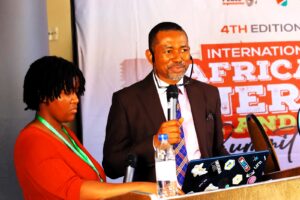Nigeria’s Central Bank Cuts Key Lending Rate to 27% in First Reduction Since 2020
Move aims to boost growth as inflation eases; economists had expected a deeper cut.
Nigeria’s Central Bank on Tuesday made its first interest rate cut in five years, trimming the Monetary Policy Rate (MPR) by 50 basis points from 27.50 % to 27 %.
The move comes as inflation has begun to moderate from its peak levels, prompting monetary authorities to shift toward a more supportive stance for the economy.
At its two-day Monetary Policy Committee meeting in Abuja, the Central Bank of Nigeria (CBN) considered recent inflation trends, macroeconomic data, and the need to support economic activity in its decision.
Governor Olayemi Cardoso said in a post-meeting briefing that the cut was justified by expectations that inflation would continue to decline through year end, and that the timing created “some headroom” for easing after months of disinflation.
Headline inflation slowed to 20.12 % year-on-year in August 2025, the fifth straight monthly drop, down from double-digit highs recorded in 2024.
The inflation moderation has been aided by a revision to the base year and weighting scheme in Nigeria’s Consumer Price Index, as well as earlier policy actions to rein in costs and stabilize the exchange rate.
Some analysts had expected a more aggressive 75-basis-point cut, pointing to persistent disinflation and pressure from business sectors to ease borrowing costs.
The unanimous vote in favour of the 50-point cut suggests the MPC opted for a cautious approach, balancing risks of inflation resurgence with the need to support growth.
To complement the rate reduction, the MPC also adjusted key liquidity and reserve settings.
The Cash Reserve Requirement (CRR) for commercial banks was lowered from 50 % to 45 %, while the reserve for merchant banks remained at 16 %.
Meanwhile, a 75 % CRR was introduced for non-Treasury Single Account public deposits to mop up excess liquidity.
The standing-facilities corridor was reset to ±250 basis points around the MPR, and the Liquidity Ratio was held at 30 %.
Observers say the rate cut will ease borrowing costs, particularly for businesses, and could help revive credit growth.
But they caution that transmission to the real economy depends on banking behaviors, fiscal discipline, and structural reforms.
Nigeria’s economy grew at 4.23 % year-on-year in Q2 2025, its fastest pace in recent quarters, providing some tailwinds for monetary easing.
The CBN noted that excess liquidity in the banking system, partly arising from fiscal disbursements tied to improved revenue, could fuel inflationary pressures if not managed.
External shocks, global interest rate shifts, and food price volatility may yet test the central bank’s resolve.
This policy shift marks the beginning of a possible easing cycle after years of tight monetary stance, reflecting the central bank’s confidence in moderating inflation and the desire to support Nigeria’s recovery.
Source: Reuters, BusinessDayng





